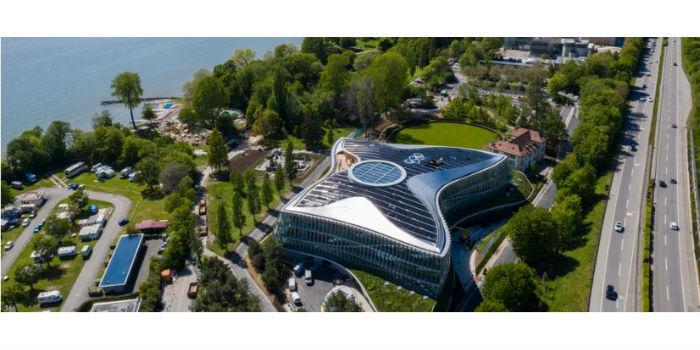 International. The International Olympic Committee (IOC) has developed a sustainability strategy that focuses on infrastructure and natural sites, resource and resource management, mobility, workforce and climate. The IOC Sustainability Report tracks progress made so far towards achieving its 18 sustainability goals by 2020.
International. The International Olympic Committee (IOC) has developed a sustainability strategy that focuses on infrastructure and natural sites, resource and resource management, mobility, workforce and climate. The IOC Sustainability Report tracks progress made so far towards achieving its 18 sustainability goals by 2020.
Historically, the Olympic Movement has been committed to green building, certifying several IOC facilities to LEED standards, including the Olympic House in Madrid, the Olympic villages of Beijing and Vancouver, and the U.S. Olympic Committee headquarters in Colorado Springs.
The headquarters of the Olympic house
This commitment to sustainability is showcased at the recently certified Olympic House in Lausanne, Switzerland. The IOC's international headquarters is the first building in the world to receive LEED v4 Platinum certification, the Swiss standard for sustainable construction (SNBS) at the platinum level and Minergie P. (the Swiss standard for energy-efficient buildings). It was also the first building in Switzerland to obtain LEED v4 Platinum and, at the time of certification, had received the most points from any LEED v4 Building Design and Construction (BD+C) project to date: 93 points.
The IOC is turning its sustainability commitments into action at the Olympic House, and the building is meant to serve as an inspiration to the entire Olympic Movement and as an enduring symbol of its sustainability strategy. Designed by SAP Garden architect 3XN, the building employs a number of sustainability strategies, including solar panels and heat pumps that use water from nearby Lake Geneva to provide renewable energy to the building. The building is expected to use 35 percent less energy and 60 percent less municipal water than a conventional building.
A focus on employee health
A focus on employee health and well-being is also intertwined throughout the building. One of the most important ways that green buildings contribute to health and well-being is through improved indoor ambient air quality. High-quality indoor environments help protect the health and comfort of building occupants, improve employee productivity, and decrease absenteeism.
The LEED rating system recognizes the importance of air quality and has several credits dedicated to it, including environmental control of tobacco smoke, minimum indoor air quality performance, and an indoor air quality assessment. Strategies promoted by LEED include the use of low-emission materials without VOCs, the establishment of minimum standards for indoor air quality according to ASHRAE 62.1-2010, the natural ventilation of spaces, the monitoring of outdoor air intake flow and the prohibition of smoking inside a building.
The IOC used several of them, including maximizing natural light, the use of sustainable and healthy materials, ergonomic design, and air quality and acoustics, to obtain certification.
The Olympic House will officially open on June 23 and USGBC and GBCI President and CEO Mahesh Ramanujam will be on hand to participate.
Source: USGBC.














